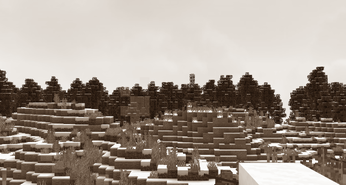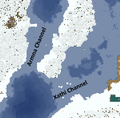The War of the Hills
Overview
The War of the Hills started on a cold Mid-Winter night... The Xanthus forces had just received new, state of the art, ballistas. The first stationary bow, which could deal a great deal of damage. As the Xanthus forces were testing this new weapon, they accidentally shot an arrow into enemy land, hitting one of their soldiers. A war was started.
Before the War
Xanthus was spending almost all of Autumn and Early winter preparing their forces, building defensive measures around their islands, and preparing for the worst. Xanthus had just purchased 12 extra ships, to add to their growing naval fleet, however; As the winter began, 2/3 of the Xanthus navy was blocked in with ice, preventing the fleet from moving anywhere.
This ice however, also meant that the channel between Xanthus and Sylf, was now iced over, allowing soldiers to run across.
The War
The Start
As Xanthus was testing a new prototype, they accidentally fired an arrow at the opposing side, kickstarting the war. Xanthus was now at war with Lodevia and Sylf. Mere seconds later, the Sylfian forces launched a large assault on the Xanthus main land, running over the now frozen channel "Xathi". Francesco the 1st was the one to face the oncoming enemy, while Skuppinu worked on alerting Velsyr.
Velsyr was quick to send whatever supplies they could, but as most of their ships were also frozen in, not many managed to arrive at Xanthus. Soon, Skuppinu joined the fight against the Sylfians.
A Worry
An ongoing worry during the conflict was the thought of Lodevia joining the war, Sylf had no way of directly contacting Lodevia from a distance, and it would take at least 8 days for Sylf to send a message to them, according to Velsyrian intelligence. A direct armed conflict with Lodevia would have meant a sure loss for Xanthus. This caused a main goal of the war to be: Move fast and take out the enemy before Lodevia finds out.
Attacking Sylfian Mainland
After the assault by the Sylfians were dealt with, the two soldiers of Xanthus immediately moved towards the mainland, avoiding the ice-cold waters. They made a "landing" at the east Sylf Docks, where a volley of arrows met them. Skuppinu quickly duck down in one of the many ditches, whilst Francesco flanked around. And within long, this army group was taken care off.
At the start of the war, already around 43 soldiers had died, whilst Xanthus suffered none. An ongoing theory to why the Sylfian armies did not "Resurrect", were one of two:
A) Lodevia is currently at conflict with Baphomet himself, and he has revoked all kind of "power" they should have.
B) Their resurrection point were not on the Sylfian mainland.
Attack on Tavnsburg
Despite taking heavy damage from the first encounter, this did not deter the soldiers, they quickly moved around the south of the island, sweeping up any straggler, and attacked the capital of Tavnsburg. Only a small army group was stationed at Tavnsburg, which made the attack fairly "easy" on the Xanthus forces. However, the Xanthus forces did not know the Sylfian war strategy, which would prove to be the most difficult defence to penetrate this entire conflict.
Battle of the hills
After the attack on Tavnsburg, the war would turn into a form of endurance race, this phase of the war consisted of attacking and defending the many hills on the Sylfian mainland. This is also the phase of the war where it slowed down, as the battle of the hills would last for an entire 5 suns.
After the war
This has still been undetermined, but Velsyr has already made demands of owning the Sylfian mainland, and giving the smaller islands to Xanthus.


